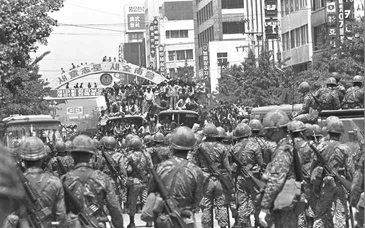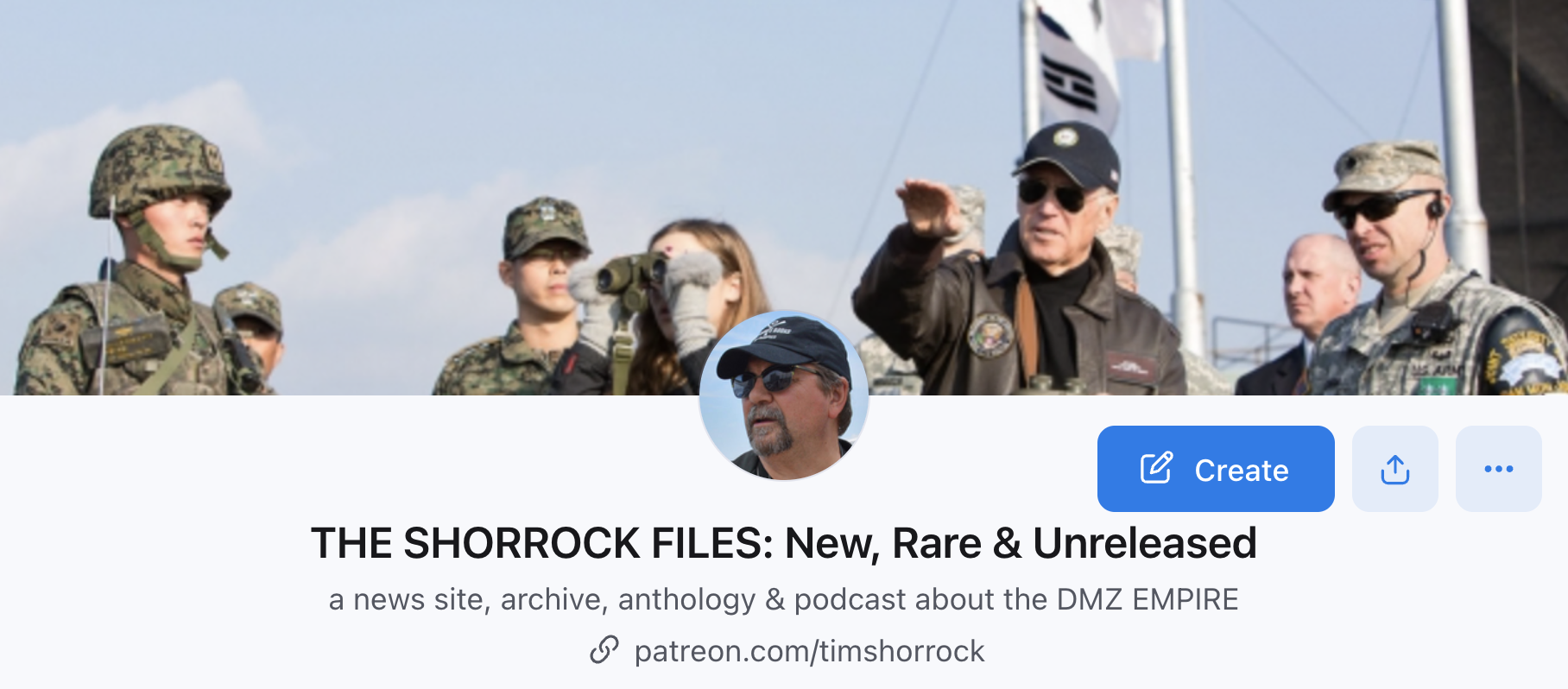
The Korean Peninsula is tense this week over the recent sinking of a South Korean naval ship, allegedly by North Korea. Once again, the United States is strengthening its already mighty military presence in the region as a warning to the DPRK and to support South Korea.
It’s thus a strange time to look back to a time, not so long ago, when the US military faced a threat not from the North, but from deep within South Korea. This occured just 30 years ago, when a peoples’ uprising in the southwestern city of Kwangju shook the US-South Korean relationship to its core – and the US was on the wrong side. That is, we threw in our lot with a group of South Korean generals who seized control of the government in a rolling and very bloody coup. The generals, Chun Doo Hwan and Roh Tae Woo, were later convicted of treason for the brutal way they seized power and crushed the democratic opposition.
The Kwangju Uprising against military rule remains a national day of remembrance in South Korea, and even amidst the Cheonan crisis, South Koreans and every faction of their deeply divided government paused to remember the hundreds who died and the 300,000 people who took part in the uprising.
During the 1990s, as many of you know, I obtained some 4,000 documents on the US role in the Kwangju period under the Freedom of Information Act and wrote about them in both the US and South Korean press. Collectively, they’ve become known as the Cherokee documents – a reference to the code name given to a set of classified cables between Washington and its embassy in Seoul that were only circulated at the highest levels of the Carter administration.
The documents, mostly from the State Department, showed that – contrary to official statements that the United States sought to restrain the Korean military – Carter’s top officials assured the Korean generals that they would not oppose his plans to use military troops against pro-democracy demonstrations in the days before his May 17 coup. Documents I obtained from the Defense Intelligence Agency demolished the official US story on the deployment of the Special Forces. For years, the US government had held that it had no knowledge of Chun’s decisions to use these forces. But the DIA cables showed otherwise: U.S. officials were aware long before Kwangju that the Korean military was planning to use Special Forces against unarmed student and worker protests. Those findings were crucial because two brigades of those Special Forces were later held responsible for the killing in Kwangju.
Today I am releasing the first new batch of Cherokee documents since 1996. These are State Department and CIA documents from 1979 and 1980 that I’ve obtained over the past few years. My initial story about the documents appeared June 1, 2010, in Foreign Policy in Focus. It provides deep background about the new documents and analyzes the Kwangju Uprising in the historical context of the Cold War.
During the 1980s I visited South Korea often to report on the political and labor situation after Kwangju. In 1985, I interviewed Kim Dae Jung, the former president and a native of Kwangju, while he was under house arrest in Seoul. My reporting from Kwangju and my interview with Kim were published in The Progressive, and inspired me to seek the truth about the US role in the uprising.
On May 18, Yonhap News ran a story and analysis of the newly declassified documents (in Korean). Here’s the documents I’ve released so far.
KWANGJU DECLASSIFIED:
- State FOIA#1 — November 1979 — Secretary of State Vance meets South Korean Foreign Minister after the Park Assassination
- State FOIA#2 — November 1979 – Secretary of State Vance meets South Korean acting President after the Park Assassination
- State FOIA#3 — December 1979 – Richard Holbrooke on the December 12 Incident
- State FOIA#4 – December 1979 — NODIS/Cherokee Richard Holbrooke on Dec. 12 Incident
- State FOIA#5 – March 1980 – Gleysteen analysis of South Korean political situation
- State FOIA #6 — May 1980 — NODIS/Cherokee US Generals Intervene in South Korea
- State FOIA#7 – May 1980 – NODIS/Cherokee Gleysteen meets Chun just before May 1980 crackdown
- State FOIA#8 – May 1980 — NODIS/Cherokee Gleysteen meets with Blue House just before the May 17 coup
- State FOIA#9 – June 1980 — NODIS/Cherokee Gleysteen meets with the Blue House after Kwangju
- CIA FOIA#1 – June 1979 – SECRET – “The Outlook for President Pak and South Korea’s Dissidents.”
